
views
Draining the Water Lines and Tanks

Shut off gas and electricity to the water heater a day in advance. The water heater is typically located on the outside of the RV, near the back. It will be underneath an external panel that you can pull open by hand. Check inside the panel for labeled power switches maintaining the electricity and propane supply to the RV. Flip each switch to the off position to give the heater plenty of time to cool down. Some RVs have an interior control panel near the front dashboard you can use to deactivate the power supply. If you don’t have time to wait for the heater to cool, run hot water inside the RV. When the water comes out cool, then you can start draining the lines. If you’re unsure about the location of the heater controls, as well as the water tanks and valves, refer to your RV’s owner’s manual.
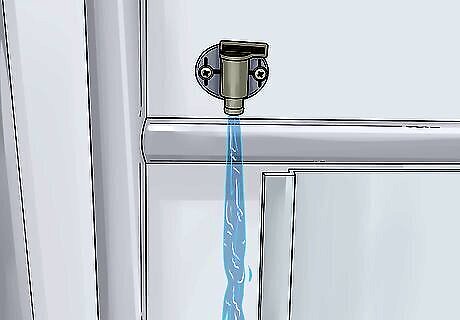
Open the freshwater tank drain underneath the RV. Walk around the outside of the RV, looking for any exterior panels you can flip open. One of them, usually near the middle of the RV, will have a valve labeled “city water connection.” Look on the opposite side of the RV from it to find a labeled freshwater inlet valve. Look below the RV for a single drainage valve hanging down. Turn it counterclockwise until fresh water begins flowing from it. Some RVs also have low drain point valves nearby. They will be close to the freshwater tank on the side or back end of the RV and labeled. Open them as well to help drain the lines. The valve can be in other spots, including inside the RV. It depends on the model you have. However, the freshwater always drains out from the bottom of the RV.

Locate the black and gray water tank valves on the side of the RV. These valves are typically under the same panel as the freshwater inlet. They are often labeled “black” and “gray” and may even have colored handles to make them more recognizable. These valves are used to control the water tanks holding used water inside the RV. These tanks, along with their valves, can be positioned elsewhere depending on the RV. They are usually near the back end on the same side as the freshwater tank, but may be accessible through a separate exterior panel. Keep in mind that some older RV models may not have separate black and gray tanks. The tank drains may also be located underneath the RV.
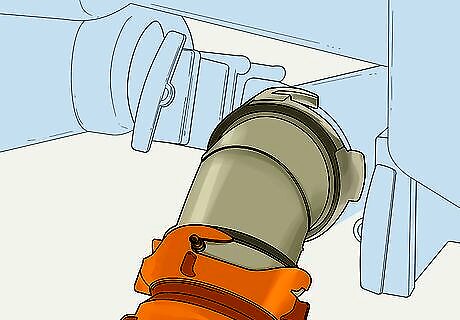
Connect a sewer hose to the black and gray water tanks. After opening the access panel covering the black and gray tank valves, put on some rubber gloves to keep your hands clean. Look for a big drain pipe covered with a twist-off cap. Remove the cap, then attach a 45-degree RV sewer hose joint to it and turn it clockwise to lock it in place. Hook the sewer hose onto the end of the elbow joint and turn it clockwise until it locks in place as well. Connect the opposite end of the hose to a nearby sewer system or septic tank. Purchase an RV sewer kit to get all the parts you need to drain the tanks. Kits are available online and at RV centers. Note that the rules for dumping sewage may vary depending on where you live. Check with your local government for specifics. You can always go to a campground with a dumping point to drain your sewage tanks.
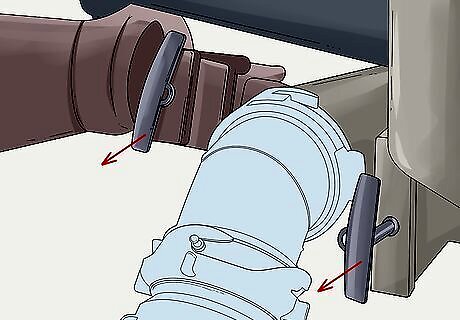
Drain the black water tank, followed by the gray one. Pull the black drainage valve toward and watch for water to begin flowing through the hose. Even if the valve lever isn’t colored black, it likely will have a label nearby telling you that it is for the black water tank. After the water stops, push the lever back in, then pull out the gray one next to it. Close it up after it has finished draining. Always clear out the black water tank first so the gray water washes out any sewage left inside the water line. If you accidentally open the black water tank first, run water through the lines, such as by flushing the toilet a few times.
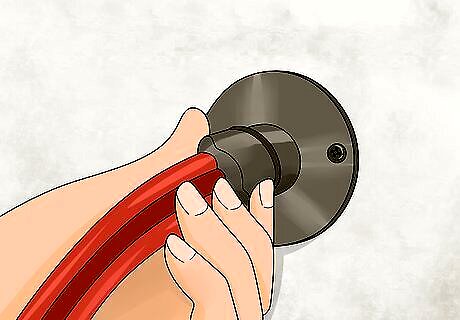
Disconnect the water supply and turn off the water pump. If your RV is currently connected to a city water supply, detach the connecting hose. Go to the source of the water supply and turn the connecting hose counterclockwise to detach it. Do the same for the end of the hose hooked to the freshwater inlet valve on the side of the RV. Then, flip the nearby water pump control switch to the off position to stop any water flow in the lines. The pump switch is typically located next to the heater controls. Check around the kitchen and underneath sinks as well. You can run the pump for about 15 to 20 seconds to help drain water after opening the valves. However, make sure you shut it off after that so it doesn’t get damaged.

Open the pressure release valve on the water heater. Go back to the water heater, which is often on one of the back corners of the RV, underneath an access panel. Pull open the panel and locate the metal valve at the top of the heater. Turn it clockwise until water starts spilling out from it. Then, do the same with the big, black plug below the pipes near the bottom part of the heater. Reinstall the plug after water stops coming out of the drain. Have a ⁄8 in (2.2 cm) socket wrench to rotate the plug and pull it out. Some RVs require a ⁄16 in (2.4 cm) socket instead. Expect to see some white sediment come out of the heater. It’s ugly and looks like sand, but it’s normal. You can insert a hose into the drain to rinse out any sediment left inside the heater.
Assembling the Air Compressor

Get a portable air compressor to blow air into the water lines. Smaller compressors are fine for winterizing your RV. Try getting one that holds at least 2 US gal (7.6 L) of air so you have enough to completely flush out the lines in one go. Pick one that also has an adjustable pressure gauge so you can control how much air gets pumped into the RV. Some RVs have a built-in air compressor that you can use to blow out the lines. Air compressors for car tires are too small for an RV. Also, oil tank compressors aren’t the best choice since they can blow debris into the water lines. If your air compressor uses a filter, replace the filter with a clean one to keep the RV’s lines nice and clean.
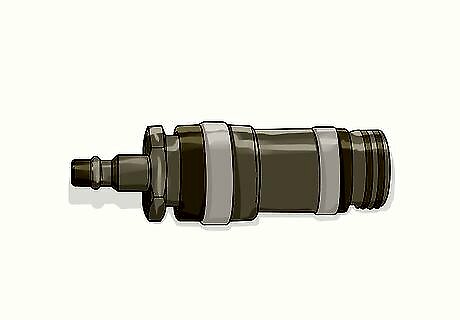
Fit a blowout plug on the RV’s fresh water inlet. The air compressor’s hose won’t fit on the valve, so you have to get a separate adapter. Take the plug to the freshwater hook-up on the outside of your RV. Push the end of the plug inside the train and turn it clockwise to lock it in place. If the plug has a small cap on the end, remove it by turning it counterclockwise. Blowout plugs, or compression adapters, are available online and at most RV centers.

Join the air compressor to the RV with a hose. Extend a flexible air compressor hose from the compressor to the blowout plug. Push one end of the hose onto the plug and turn it clockwise until it stays in place. Insert the opposite end of the hose in the outlet valve on the end of the compressor. To find the outlet, look for an open, brass valve in front of the compressor’s pressure gauges. If your compressor has a blow gun, take advantage of it to make the process easier. Use a hose with open adapters on both sides so you can insert both the blowout plug and the tip of the blow gun. If you’re unable to hook up a hose, buy an adapter called a coupler to hook it to the blowout plug. Hoses are different, since they can have a plug-in “male” end or open “female” ends that male plugs fit into.
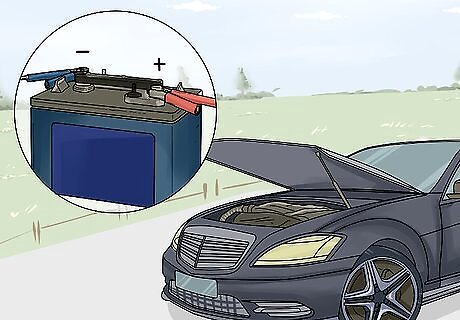
Connect the compressor to a car battery or another power source. This will depend on what kind of power source your air compressor uses. Many small, portable compressors have hookups similar to jumper cables. Park your car near the air compressor and open the hood. After locating the battery, clip the black cable to the negative battery terminal and the red cable to the positive one. Start your car afterward to power the compressor. The battery is typically located in the front right or left side of a car’s engine bay. It looks like a small box with metal terminals labeled + and -. Clamp the compressor’s hookups onto these terminals. If your compressor runs on electricity, plug it into a nearby outlet. Use an extension cord as needed to connect to distant outlets.
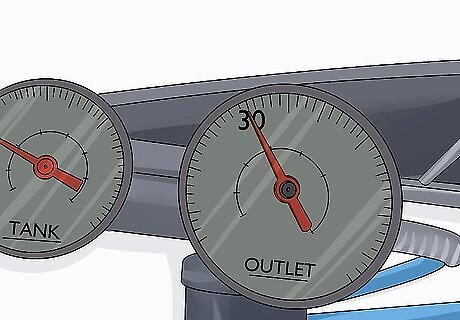
Set the compressor to 30 PSI and let it fill for 2 minutes. Flip the power switch on the compressor to start it. Once it is on, watch the pressure gauges. Look for the gauge labeled with PSI. Let the compressor fill up, then reach for the regulator adjustment knob nearby. Turning it clockwise increases the air pressure in the tank. Turn it counterclockwise to lower the pressure. If your compressor doesn’t have a regulator, buy a separate one and fit it on the end of the blowout plug. Attach the compressor hose to the other end. High air pressure can cause the water lines to burst, so set the compressor with caution. A low pressure setting is more than enough to clear out the lines.
Flushing the Water Lines

Turn on one of the faucets to drain it of water. Go inside the RV to the nearest faucet, such as in the kitchen. Use the tap to run hot water in the sink. With the faucet active, go back outside and press the trigger on the compressor’s blow gun to push hot air through the system. Once the hot water stops flowing, go back inside, turn off the hot water, and open the cold water line to blow it out as well. This part is easier if you have someone helping you. Have them hold the compressor hose or tell you when water stops flowing from the faucet. If you’re using a compressor with a blow gun, try doing 2 separate blasts of air for 15 seconds each. It will be more than enough to clear the lines.
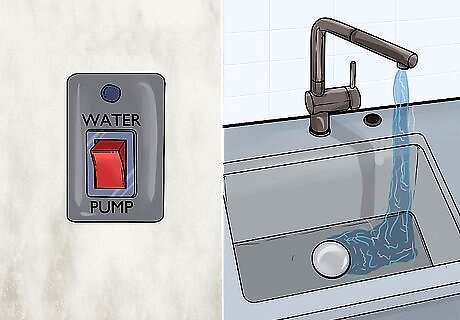
Blow out the hot and cold lines on other water faucets in the RV. Close the first faucet you cleared out and open a different one. For each faucet, clear out the hot water line first. Close it and blow out the cold water line afterward. Take a systematic approach to your RV so you don’t miss any faucets. Go from room to room, clearing the sinks one at a time. If your sink has separate controls for warm and cold water, make sure you clear both lines out separately. If the faucet has a single control for both warm and cold water, you can activate the warm water to clear both lines at once. However, treating them separately ensures they are 100% drained.
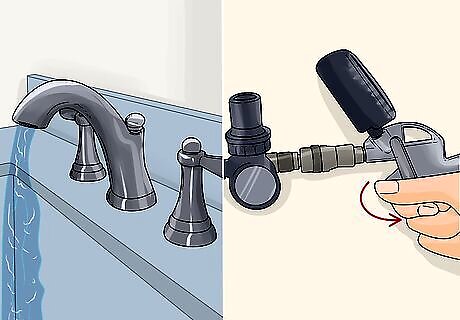
Flush showerheads, toilets, and other water lines in your RV. Adjust the shower to the warmest setting, then press the trigger on the compressor’s blow gun until the water stops flowing. For toilets, flush them while the blow gun is active. Also, turn on any ice machines, dishwashers, and washing machines, then use the blow gun while they are active. Remember to do the same for extra components, such as kitchen sink sprayers or outdoor showers, as well. If you have a water filter, disconnect and empty it as well. For more assistance dealing with components like dishwashers and washing machines, check your owner’s manual. It will have recommendations for effectively clearing the lines.
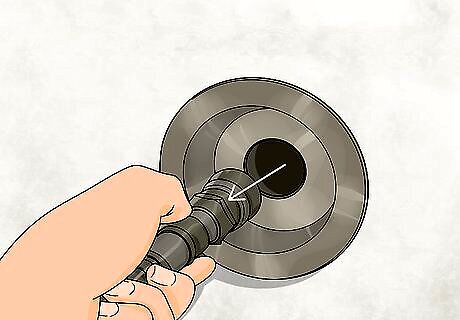
Disconnect the air compressor from the RV. Turn off the air compressor and open the pressure release valve to empty its tank. Also, turn off your car before unclipping the power cables. Turn the compressor hose counterclockwise to remove it from the blowout plug, then do the same to the blowout plug to detach it from the RV. Finish by closing the panel that normally covers the RV’s inlet valve. Remember to also disconnect the sewer hose and garden hose if you haven’t already.
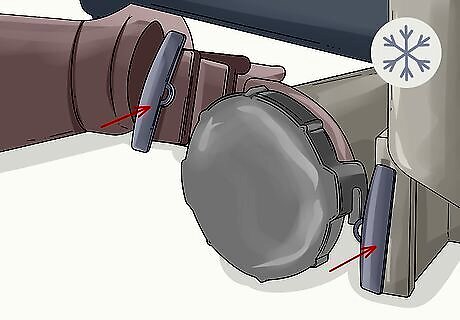
Close the external outlets on the RV. Protect your RV from damage by sealing it up for the winter. Make sure you turn the water heater pressure release valve clockwise, for instance, as well as the drainage valve underneath the freshwater tank. For the gray and black water tanks, slide the plugs back in to close their valves again. Leave the faucets open inside the RV so that any air left over can safely escape.


















Comments
0 comment